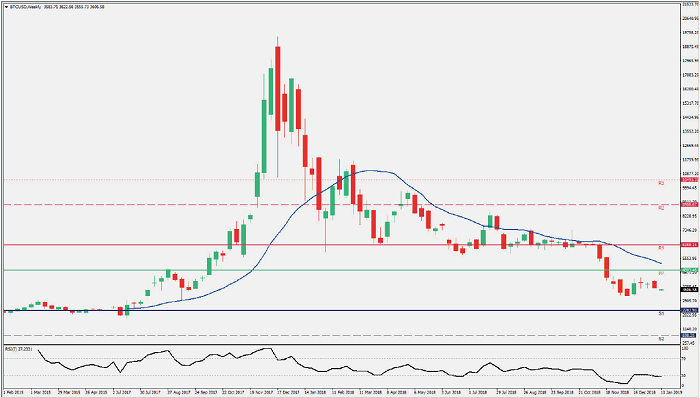Satoshi Nakamoto (1975-present) is the fictitious name of the person (or group of people) who developed Bitcoin.
Although his identity is uncertain, there are several versions of his real identity. Obviously, some versions have more weight than others. In any case, it is believed that his profile is that of a mathematician and cryptographer, around 40 years old. Despite being of Japanese origin, he speaks perfect English. Hence, some versions doubt that the Bitcoin developer is actually Japanese.
A bit of history of Bitcoin and Satoshi Nakamoto

Perhaps the first public trace of the mother cryptocurrency was in August 2008, when the bitcoin.org domain was registered. Later that same year, on November 1, with very few people paying attention to the birth of a technology intended to revolutionize the financial system, Nakamoto posted on a cypherpunk mailing list on metzdowd.com a White Paper titled “Bitcoin: A System of Electronic Cash User-to-User ”. In this document, the first thing that appears under the title is that alias, an email and the domain that had been registered months ago.
Here it is necessary to point out that that white paper could have been published anywhere, but, of all the options, it came to light among cypherpunks, and this, in addition to what Bitcoin itself represents, speaks very clearly about the ideology of Nakamoto.
After the document was published on January 3, 2009, the genesis block of the first blockchain is created, with a reward of 50 BTC. The message engraved inside it not only serves to ensure the creation date, but also sheds light on Nakamoto’s ideas: “The Times 03/Jan/2009 Chancellor on the brink of the second bailout for the banks.”
This is a headline that day from the British media The Times that does not speak highly of traditional banks. Soon after, on February 11, Nakamoto would publish a rather revealing post on the P2P Foundation regarding his thoughts on these institutions.
The fundamental problem with conventional money is all the trust required to make it work. We must trust the central bank not to devalue the currency. But the history of fiat money is full of abuse of that trust (…) A generation ago, multi-user computer systems had the same problem (…) Then came strong encryption, and it no longer had to be based on trust. The data could be secured in a way that made it impossible for it to be accessed by others. It is time that we have the same for money.
Satoshi Nakamoto
His profile information in said foundation, by the way, contains all the little information that is known about him. According to what he wanted to share there, and which should not necessarily be true, he is a man born on April 5, 1975 and originating or residing in Japan, at least according to the profile’s activity date.
The first developers who contacted him to collaborate on Bitcoin also got little or no personal information, despite frequent communication with him. Or at least, that’s what they claim.
Programmer Hal Finney was the first person to receive bitcoins, specifically, 10 BTC, on January 12, 2009. Other early supporters of the technology were Wei Dai and Nick Szabo. All three are creators of cryptocurrency precursor systems and all three have also been singled out as candidates for being Satoshi, though they have denied it.
For his part, the developer Laszlo Hanyecz, better known as the man who bought a pizza for 10,000 BTC, became involved in the development of Bitcoin during 2010, by that time he was sharing emails with Nakamoto, but he assures that all his talks they were limited to cryptocurrency. He has gone so far as to declare that Nakamoto was “a little weird” (opinion shared by Gavin Andresen, who would become Bitcoin’s main developer), as well as paranoid and plaintiff. “I asked some questions, but he always avoided them,” Hanyecz confessed in May 2018. He also revealed that Nakamoto’s answers were not, by far, immediate, as he always used to receive them several days late, so he assumed that “he was busy working on something else”; and stressed that he had an almost suspicious desire to keep his identity in the strictest secrecy.
Until now, the most probable hypothesis attributed to Craig Steven Wright the authorship of the pseudonym Satoshi Nakamoto. However, many doubts have arisen regarding this theory, especially after Craig Steven Wright abandoned anonymity stating that he was actually Satoshi Nakamoto.
Shortly after these claims – and after committing to provide supporting evidence for his version – he released a statement admitting that he was not prepared to assume such responsibility.
Craig Steven Wright: The creator of Bitcoin?
Craig Steven Wright born in 1970 is a computer scientist and businessman. He called himself Satoshi Nakamoto around 2015. Although after the investigations of the specialized magazines, Wired and Gizmodo, everything seemed to make sense, the reality is that there are still serious doubts.
After revealing his true identity, he claimed that he would provide the encodings of the first Bitcoins that were created to demonstrate that he was the creator of Bitcoin. Right after, he created a blog to post information regarding the virtual currency. In that blog, now extinct, he finally published a resignation message. The message dictated:
I’m Sorry.
I believed that I could do this. I believed that I could put the years of anonymity and hiding behind me. But, as the events of this week unfolded and I prepared to publish the proof of access to the earliest keys, I broke. I do not have the courage. I cannot.
When the rumors began, my qualifications and character were attacked. When those allegations were proven false, new allegations have already begun. I know now that I am not strong enough for this.
I know that this weakness will cause great damage to those that have supported me, and particularly to Jon Matonis and Gavin Andresen. I can only hope that their honour and credibility is not irreparably tainted by my actions. They were not deceived, but I know that the world will never believe that now. I can only say I’m sorry.
And goodbye.
Other research on Satoshi Nakamoto
Apart from this hypothesis, there is other research on Satoshi Nakamoto. There are versions that indicate that Satoshi Nakamoto could be a single person or, conversely, a group of people.
Among the real people who have been rumored to be the true Satoshi are:
- Nick Szabo
- Dorian Nakamoto
- Hal Finney
- Craig Steven Wright
- Vincent van Volkmer
In any case, cryptocurrency experts agree that the code is too well developed to be the result of the work of a single person.
On the other hand, Stefan Thomas – member of the community where Satoshi Nakamoto made his publications – analyzed the hours at which these were made. According to his research, the creator of the Bitcoin had some regularity in the publication times. Thus, he concluded that it was most likely someone located somewhere in North America, Central America, or South America. Assuming, yes, that the father of Bitcoin had normal sleep habits.
Does anyone know who Satoshi is?
Of course, if Satoshi Nakamoto hid a group of people behind him, it is more than certain that there are several who know the identity of all the members of the group, but have decided to remain silent about it. Among them may be the early supporters of the technology.
However, it is also quite probable that the CIA and the NSA know the identity of Nakamoto. During June 2018, journalist Daniel Oberhaus of Motherboard claimed to have consulted Nakamoto’s identity with the CIA under the Freedom of Information Act (FOIA), which gives any U.S. citizen the right of access to federal information from the government. The agency’s response turned out to be quite ambiguous: “The request has been rejected, and the agency states that it cannot confirm or deny the existence of the requested documents.”
Previously, in August 2017, financial blogger Alexander Muse published an article on Medium stating that, according to a friend of his in the United States Department of Homeland Security (DHS), the NSA had dedicated himself to investigating the identity of Nakamoto to make sure he wasn’t a state actor with plans against United States. To find out if they were right, they used fountain pen analysis, a technique already used on previous occasions to try to identify the creator of Bitcoin. However, the NSA apparently had many more tools, specifically, its global surveillance programs that allowed it access to the servers of Google, Yahoo, Facebook, Microsoft and Amazon, so they could check billions of emails looking for matches using a supercomputer. According to Muse, the effort took them a month and paid off positively, although the agency is unwilling to disclose those results. Proof of this is that Muse himself was visited by a DHS agent, he says, although he did not reveal what they were talking about at the time.






